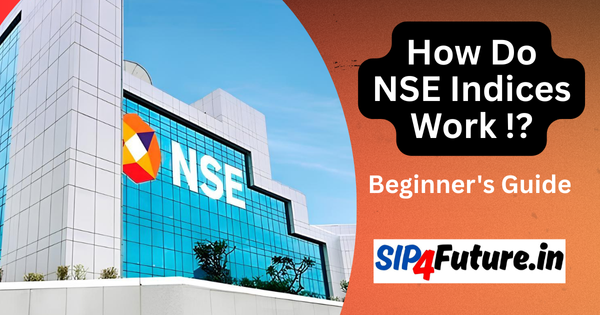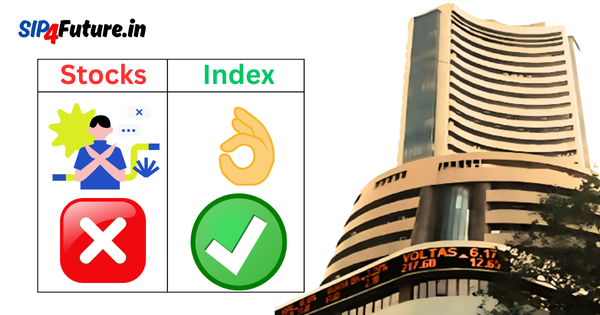PCBL Chemical Limited, a titan in India’s specialty chemicals sector, has set an ambitious target to achieve Rs 25,000 crore in revenue within the next four to five years. As of April 30, 2025, the company’s stock on the National Stock Exchange (NSE) stands at Rs 368.90, reflecting a marginal dip of 0.05%. Despite this, PCBL Chemical’s robust financial performance, with a 31% revenue surge to Rs 8,404 crore in FY 2025, underscores its growth trajectory. This article dives into PCBL’s strategic roadmap, exploring its carbon black capacity expansion, forays into battery chemicals, and green power initiatives, while assessing the broader market dynamics, government policies, and global scenarios shaping its journey.
What Drives PCBL Chemical’s Revenue Ambition?
PCBL Chemical, part of the RP-Sanjiv Goenka Group, is India’s largest carbon black manufacturer and ranks seventh globally. Its revenue goal of Rs 25,000 crore by 2030 hinges on diversifying its portfolio and scaling operations. In FY 2025, the company reported consolidated revenue of Rs 8,404 crore, a 31% jump from the previous year, driven by higher sales volumes and contributions from its acquisition of Aquapharm Chemicals for Rs 3,800 crore in November 2023. This acquisition has bolstered PCBL’s presence in high-margin specialty chemicals, particularly in water treatment and oil & gas segments.
The company’s strategic pillars include:
- Carbon Black Expansion: PCBL aims to surpass 1 million metric tons per annum (MTPA) in carbon black capacity by FY28, up from its current 790,000 MTPA.
- Specialty Chemicals Growth: The specialty chemicals segment, with applications in plastics, inks, and coatings, is projected to contribute significantly to revenue, with margins expected to rise from 16% to 18%.
- Battery Chemicals Venture: A joint venture with Kinaltek, an Australian nanotechnology firm, positions PCBL to develop nano-silicon products for lithium-ion batteries, tapping into the booming electric vehicle (EV) market.
- Green Power Generation: PCBL’s green power capacity of 134 megawatts supports sustainable operations and cost efficiencies.
These initiatives align with global trends favoring sustainable and high-performance materials, positioning PCBL Chemical as a leader in the specialty chemicals landscape.
How Is PCBL Expanding Its Carbon Black Capacity?
Scaling Production to Meet Global Demand
PCBL Chemical’s carbon black segment, which accounts for the bulk of its revenue, is undergoing aggressive expansion. The company operates five state-of-the-art plants in Durgapur (West Bengal), Palej (Gujarat), Mundra (Gujarat), Kochi (Kerala), and Chennai (Tamil Nadu). In FY 2025, PCBL completed a 20,000 MTPA specialty chemical capacity addition at its Mundra plant, bringing its total carbon black capacity to 790,000 MTPA. Plans are in place to add 430,000 MTPA by FY28, requiring a capital expenditure (CapEx) of Rs 2,500–2,600 crore.
| Manufacturing Unit | Location | Key Focus |
|---|---|---|
| Durgapur | West Bengal | Carbon black, power generation |
| Palej | Gujarat | Specialty chemicals |
| Mundra | Gujarat | Carbon black, specialty grades |
| Kochi | Kerala | Carbon black production |
| Chennai | Tamil Nadu | Carbon black, battery chemicals |
This expansion is timely, as global demand for carbon black, used in tires, rubber, and plastics, is rising. India’s emergence as a major exporter to the EU and North America, amid reduced production in China due to environmental concerns, provides PCBL with a competitive edge. The company’s focus on specialty grades under brands like Bleumina and Nutone enhances its profitability, as these products command higher margins.
Addressing Supply Chain Challenges
Rising freight rates, up by 35–40% globally, pose a challenge to PCBL’s margins. However, the company mitigates this through efficient manufacturing and a diversified supply chain. Its global presence in over 45 countries ensures resilience against regional disruptions, making PCBL Chemical a reliable supplier in volatile markets.
What Role Do Battery Chemicals Play in PCBL’s Growth?
Tapping into the EV Revolution
PCBL Chemical’s joint venture with Kinaltek to develop nano-silicon products for lithium-ion batteries marks a strategic pivot into the battery chemicals market, projected to grow at a 25% CAGR. This move aligns with the global shift toward electric vehicles, where demand for high-performance battery materials is surging. PCBL expects significant revenue from this segment by FY29, focusing on cost-effective, eco-friendly solutions.
The company has also announced plans to establish India’s first acetylene black plant, catering to the battery, semiconductor, and conductive markets. Acetylene black, used in high-technology applications, strengthens PCBL’s position in the fast-growing conductive segment, further diversifying its revenue streams.
Strategic Partnerships and Innovation
PCBL’s collaboration with Kinaltek leverages cutting-edge nanotechnology to produce sustainable battery materials. This partnership supports India’s push for self-reliance in EV manufacturing, as outlined in the government’s Production Linked Incentive (PLI) scheme for Advanced Chemistry Cells (ACC). By aligning with national priorities, PCBL Chemical enhances its market credibility and access to incentives, bolstering its growth prospects.
How Does Green Power Generation Support PCBL’s Strategy?
Sustainable Operations for Cost Efficiency
PCBL Chemical’s green power generation capacity of 134 megawatts, derived from waste gas in carbon black production, is a cornerstone of its sustainability strategy. In Q2 FY25, power generation increased by 25% to 209 million units, with external sales of 126 million units at an average realization of Rs 3.56 per kilowatt-hour. This not only reduces operational costs but also positions PCBL as a leader in environmental, social, and governance (ESG) practices.
The company’s Baroda power plant was the first globally to earn carbon credits from the United Nations Framework Convention on Climate Change (UNFCCC), highlighting its commitment to sustainability. By expanding green power capacity to 150 megawatts by FY28, PCBL aims to further lower its carbon footprint and enhance profitability.
ESG as a Competitive Advantage
PCBL’s focus on ESG resonates with global investors and clients prioritizing sustainable practices. Its safety data sheets (SDS) ensure compliance with environmental regulations, while R&D efforts target innovative, eco-friendly products. These initiatives strengthen PCBL Chemical’s brand equity and appeal in international markets.
When Will Government Decisions Impact PCBL’s Stock Price?
Supportive Policies Boosting Growth
India’s chemical sector benefits from favorable government policies, such as the PLI scheme for chemicals and incentives for clean energy. The PLI scheme encourages domestic production of specialty chemicals and battery materials, directly supporting PCBL’s expansion plans. Additionally, the government’s push for renewable energy aligns with PCBL’s green power initiatives, potentially reducing energy costs and enhancing margins.
Recent trade policies, including tariff reductions on chemical exports under India-UK trade talks, could further boost PCBL’s international sales. The company’s ability to capitalize on these policies strengthens its stock market outlook, as reflected in analyst ratings favoring a “Buy” recommendation.
Potential Risks from Regulatory Changes
However, regulatory changes, such as stricter environmental norms or tax adjustments, could pose challenges. For instance, a recent demand notice from the Income Tax Department, disclosed under SEBI regulations, may create short-term uncertainty. PCBL’s high debt-to-equity ratio of 116% also raises concerns, particularly if interest rates rise due to government monetary policies. Investors should monitor these developments closely, as they could influence PCBL Chemical’s stock performance.
How Does the Global Market Scenario Affect PCBL’s Stock?
Opportunities in a Shifting Landscape
The global carbon black market is undergoing a transformation, with India emerging as a key supplier due to production constraints in China. Environmental regulations and high input costs have curtailed Chinese exports, creating a supply gap that PCBL is well-positioned to fill. The company’s export markets in the EU and North America are expanding, driven by demand for sustainable and high-performance materials.
PCBL’s stock has shown resilience despite global economic turbulence. Its 52-week high of Rs 584.40 reflects strong investor confidence, though recent corrections have brought it to Rs 368.90 as of April 30, 2025. Analysts attribute this volatility to broader market trends and rising freight costs, but PCBL’s diversified portfolio and strategic expansions mitigate these risks.
Challenges from Economic Volatility
Global economic uncertainties, including inflation and geopolitical tensions, could impact PCBL’s margins. The company’s exposure to raw material price fluctuations, particularly feedstock oil, remains a concern. However, PCBL’s focus on cost efficiency and product diversification helps buffer these challenges, ensuring steady growth in its stock value.
What Are the Sectoral Impacts on PCBL’s Performance?
Automotive and Tire Industry Growth
The automotive sector, a major consumer of carbon black, is a key driver of PCBL’s revenue. India’s automotive industry is projected to grow at a 7% CAGR, fueled by rising domestic demand and EV adoption. PCBL’s carbon black grades, used in tire manufacturing, benefit from this trend, with sales volumes rising 14% to 148,693 metric tons in Q2 FY25.
Specialty Chemicals Demand
The specialty chemicals sector, encompassing paints, plastics, and coatings, is another growth engine. PCBL’s acquisition of Aquapharm Chemicals has enhanced its capabilities in water treatment and oil & gas chemicals, segments with operating margins exceeding 20%. This diversification reduces reliance on carbon black and strengthens PCBL Chemical’s financial stability.
Renewable Energy Synergies
PCBL’s green power generation aligns with the renewable energy sector’s growth, supported by government incentives and global sustainability trends. By integrating clean energy into its operations, PCBL reduces costs and appeals to ESG-focused investors, positively impacting its stock performance.
What Do Analysts Say About PCBL’s Future?
Target Prices and Growth Projections
Analysts are optimistic about PCBL Chemical’s growth, with several research firms issuing bullish target prices:
| Research Firm | Target Price (Rs) | Recommendation | Timeframe |
|---|---|---|---|
| HDFC Securities | 524–559 | Buy | 2–3 Quarters |
| JM Financial | 635 | Buy | 12 Months |
| Prabhudas Lilladher | 543 | Buy | 12 Months |
| Nuvama | 486 | Buy | 12 Months |
These targets reflect confidence in PCBL’s capacity expansion, specialty chemicals focus, and battery chemicals venture. JM Financial projects a fivefold increase in profit after tax (PAT) to Rs 2,400–2,500 crore by 2030, driven by margin expansion and new business verticals.
Historical Returns
PCBL’s stock has delivered impressive returns, outperforming peers in the specialty chemicals sector:
- 1-Year Return: 58.14% (as of April 1, 2025)
- 3-Year Return: Outperformed top 5 specialty chemicals stocks by market cap
- 5-Year Return: Nearly tripled investor capital, with a 206% rally in the last 12 months (August 2024)
Despite a 14.86% year-to-date decline in 2025, PCBL’s long-term growth potential remains strong, supported by its strategic initiatives and market positioning.
Conclusion: A Bright Future for PCBL Chemical
PCBL Chemical’s ambitious Rs 25,000 crore revenue target by 2030 is underpinned by its strategic focus on carbon black expansion, battery chemicals, and green power generation. The company’s robust FY 2025 performance, with a 31% revenue increase to Rs 8,404 crore, reflects its ability to capitalize on global opportunities and navigate challenges. Supportive government policies, a favorable global market scenario, and strong sectoral demand further bolster PCBL’s growth prospects. While risks like high debt and regulatory changes warrant caution, PCBL Chemical’s diversified portfolio and innovation-driven approach position it for sustained success. Investors looking for exposure to India’s specialty chemicals sector may find PCBL a compelling opportunity.
Disclaimer: The information provided in this article is for educational purposes only and should not be considered financial advice. Investing in securities involves risks, and past performance is not indicative of future results. Readers are advised to conduct their own research, consult with qualified financial advisors, and exercise caution before making investment decisions. The author and publisher are not responsible for any losses incurred based on the information presented.




